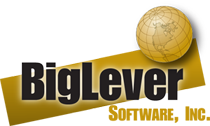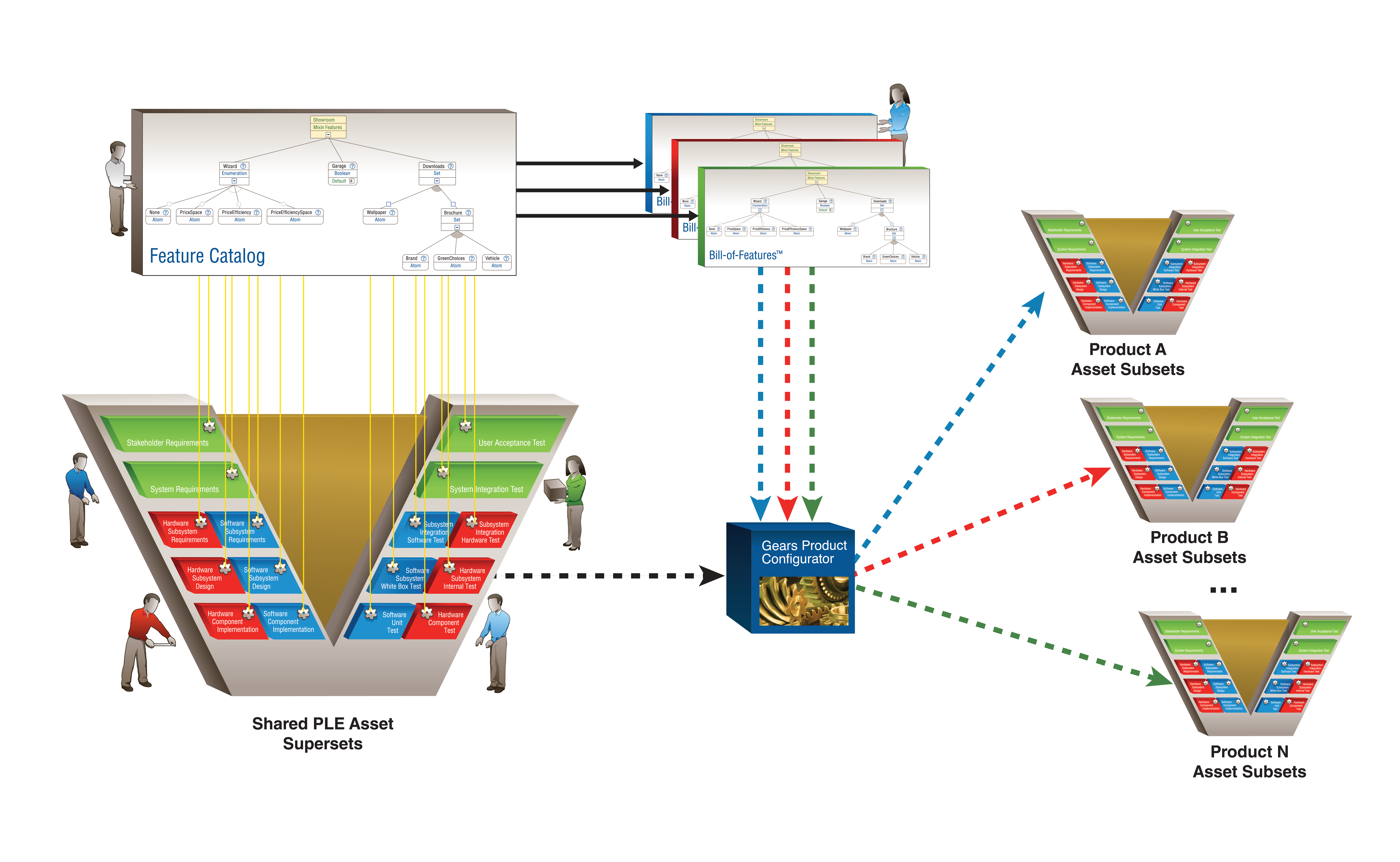What if the scale of your product line and the scope of diversity within the product line can be based on business opportunities and profitability — rather than the complexity limitations imposed by traditional product-centric approaches?
That’s where the Product Line Engineering Factory comes in.
The Quagmire of Product-Centric Thinking.
The methods and tools of systems and software engineering have predominantly promoted a traditional product-centric perspective. The result is a bevy of adhoc tools and processes that are being applied to the development lifecycle of an individual product – from early inception through design, implementation, testing, deployment, and maintenance.
In that world, a product line is nothing more than a collection of individual products developed, by and large, independently.
This product-centric perspective creates a quagmire of complex and labor-intensive interactions, dependencies, and duplicated coordination activities (illustrated by the red lines) for the groups that seek to take advantage of similarity among the individual products — A through N — in the product line.
Product Line Engineering (PLE) changes the game.
The Power of the PLE Factory.
Organizations mired in the complexity, inefficiency, and pain of product-centric approaches experience a PLE epiphany when a shift in perspective reveals a better solution to the problem: It is much more effective to create an efficient means of production – a single system capable of automatically producing all of the products in a product line – rather than a multitude of interrelated products.
The Feature-based PLE Factory is that single system.
The PLE Factory is much like a typical manufacturing factory except that it operates on digital assets rather than physical parts.
Shared asset superset.
- The factory includes a collection of assets that are shared across the products in the product line (shown in the bottom left of the above illustration using the familiar “V” model of system engineering.)
- Shared assets can be whatever artifacts are representable digitally — and either compose a product or support the engineering process to create, field, and operate a product.
- The content of each shared asset type is a superset, meaning that all of the content to serve the entire product line is present, but no content is duplicated.
Variation points.
- The presence of variation points is indicated by the small gear symbols in each asset type.
- A variation point is a piece of shared asset content — a requirement, a section of source code, a test case, a bill-of-materials, a paragraph of documentation, and so forth — whose participation in a product depends upon the features chosen for that product.
- Variation points are defined in terms of features in the product line’s Feature Catalog.
Feature Catalog.
- The Feature Catalog contains all the feature options available for all the products in that product line, and is used by individuals and teams across the lifecycle, and across organizational functions.
Bill-of-Features.
- The features chosen for each product are specified in the Bill-of-Features for that product.
- The configurator — provided by BigLever’s Gears PLE Lifecycle Framework — applies a Bill-of-Features to all of the shared assets, and evaluates each variation point to see if that variation point’s content should be included or not.
The output of the PLE Factory can be thought of as “V” subsets, each one specifically suited for one of the products in the product line. Engineers now work on the shared asset supersets, the Feature Catalog, and the Bills-of-Features. All development occurs inside the PLE Factory. Once the PLE Factory is established, engineering assets and products are instantiated rather than manually created.
BigLever’s Gears PLE Lifecycle Framework is the technology foundation for the PLE Factory. The product configurator provided by Gears assembles and configures the shared digital assets to create product instances that, together, constitute the artifact set for one of the products in the product line. Configuring the shared assets for each product in turn produces the entire set of products.



